15 Stylish Floating Deck Ideas for Spaces of Any Size
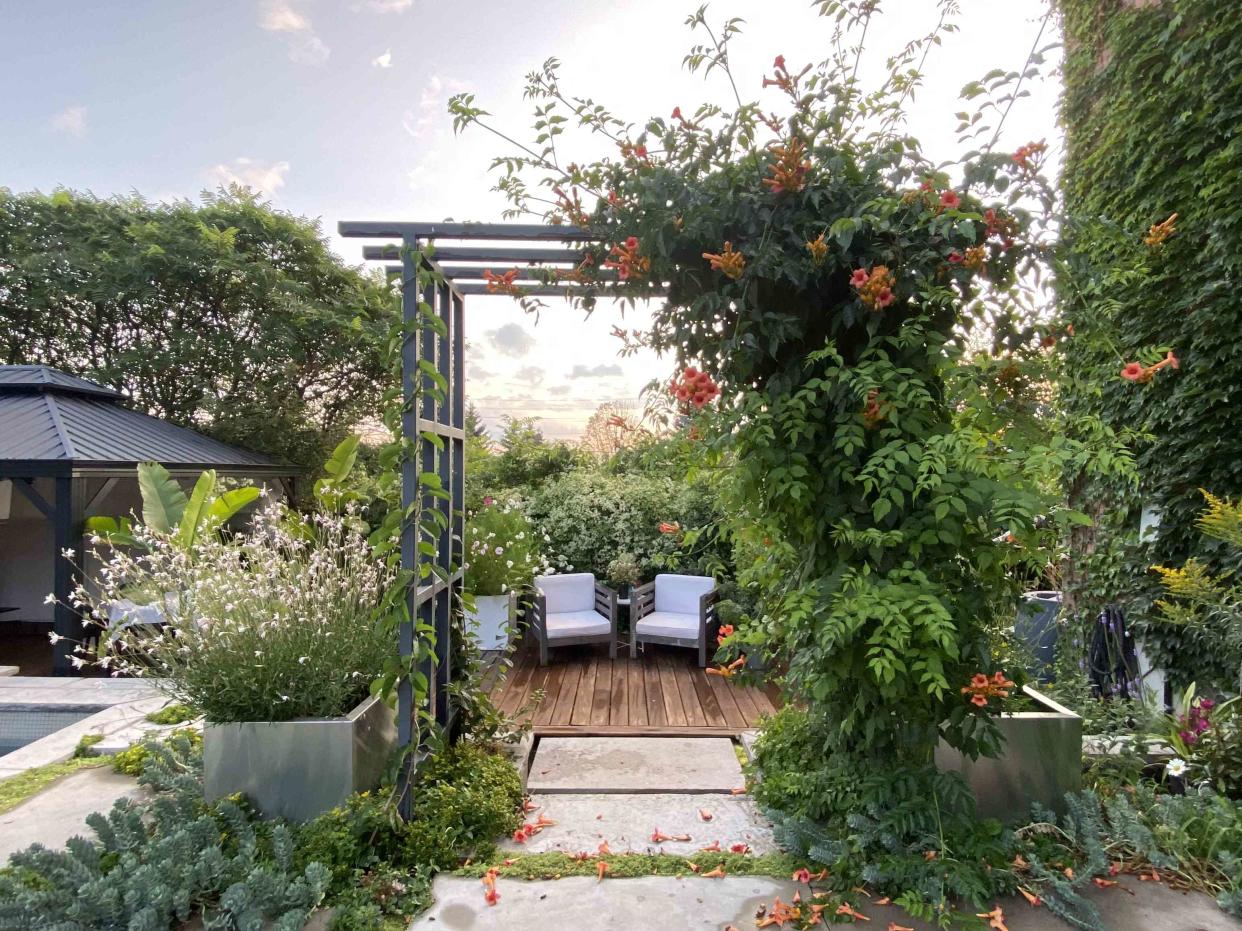
@ladylandscape / Instagram
Looking for floating deck ideas to make your backyard more usable? Unlike primary decks that are usually elevated and have railings, floating decks are typically smaller, low to the ground, and open to your lawn.
“A floating deck is essentially a structure that rests on top of the ground rather than being attached to a building or foundation,” says Ryan Vaughn, co-owner of San Diego Stamped Concrete & Staining. “This type of deck is often used in areas where the ground is uneven or where traditional structures cannot be built due to zoning restrictions. Generally speaking, a floating deck can be an excellent way to create additional outdoor living space without breaking the bank.”
Floating decks are often situated some distance from the house, and can act like a secondary deck, according to Annie Thornton, outdoor expert at Houzz.
Check out these stylish floating deck ideas in a range of backyards for inspiration.
Configure Strategically
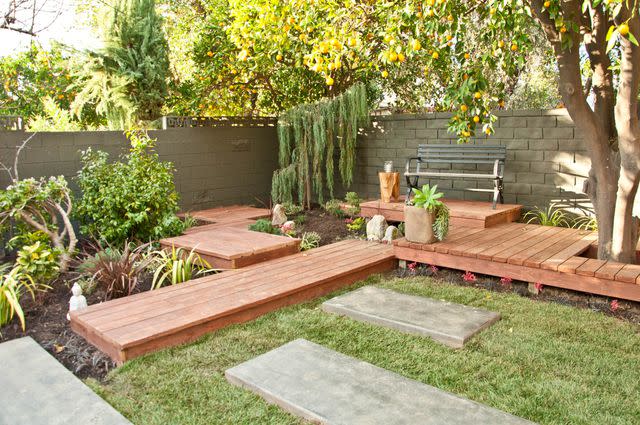
Landscape designer Sara Bendrick built a custom nook with several floating decks that create a peaceful corner in a garden. Make your own niche by adding small sculptures, succulents, and a bench.
Attach a Flower Bed
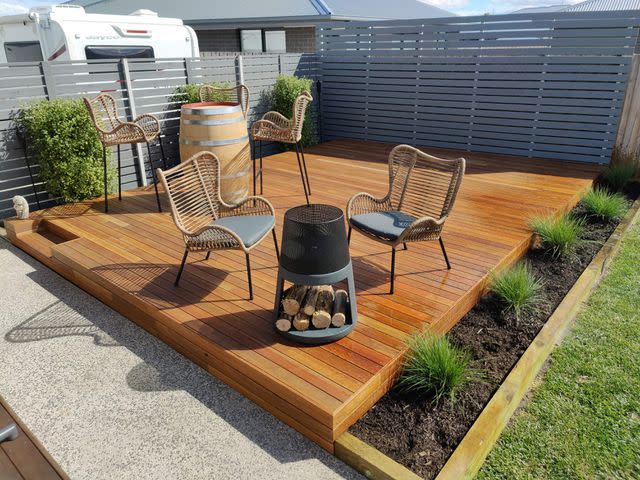
@buildtuff / Instagram
As you design your floating deck, consider adding a garden bed around the perimeter. Not only does it make planting easier, it elevates the deck from basic timber to something sophisticated.
Cover With an Outdoor Rug
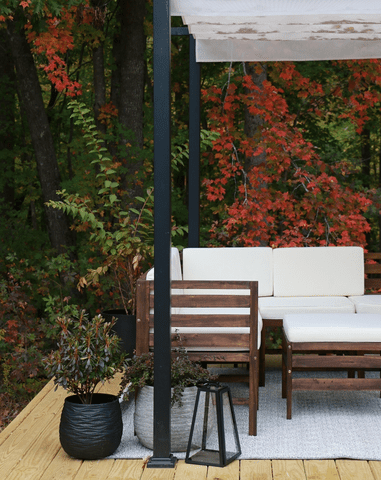
@carmonaacres / Instagram
Ursula Carmona of Home Made by Carmona added a neutral rug to soften the wooden floating deck in her backyard. Choose a rug in a natural hue that won't compete with the surroundings.
Create a Dining Space
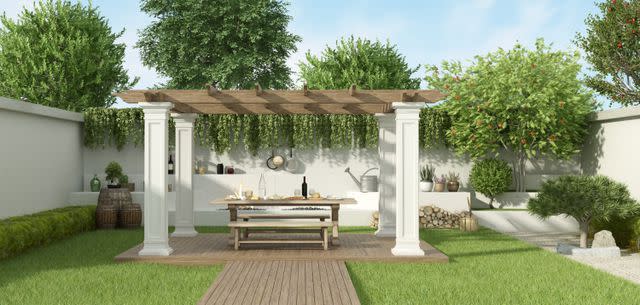
archideaphoto / Getty Images
A floating deck can be used to anchor an outdoor dining space (or other "outdoor room"). A trellis will further designate the space, and you can set up a table, chairs, or even a bench underneath. To give the area a distinct style, choose landscaping elements to match your design.
Make It Tiny
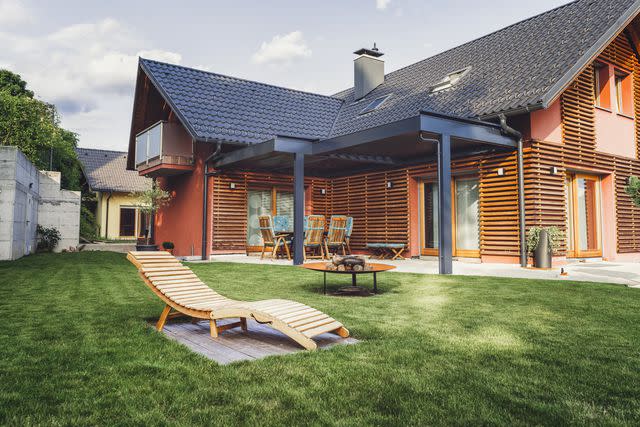
Ziga Plahutar / Getty Images
No need to make the floating deck huge. You can make mini spaces to anchor chairs and lounges around your yard. Think of it as a decking archipelago.
Add an Entrance
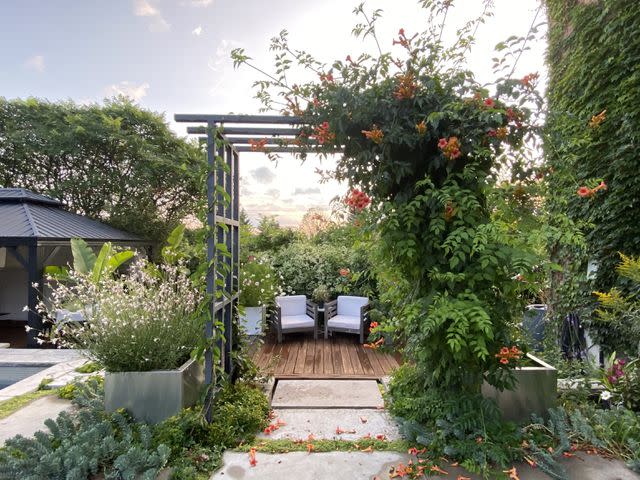
@ladylandscape / Instagram
Once you install a floating deck, create an entrance that will welcome you into the space to make it feel more secluded and intimate. Put up an archway or a trellis, then plant climbing fauna to enhance the design. Large planters can also work here to frame the opening.
Stay in the Same Color Scheme
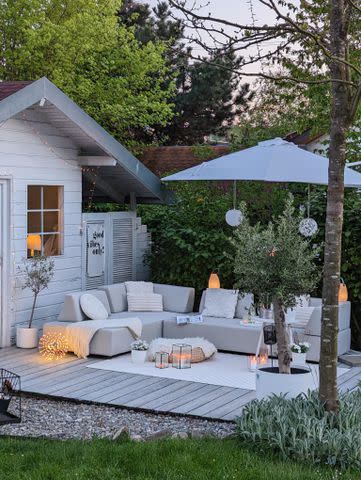
@herzenstimme / Instagram
While floating decks are typically positioned away from the house, you can easily place one right next to your home as a type of patio.
If that is the design you have in mind, enhance it by coordinating the deck furniture with the house palette. Scandinavian touches help create a sense of serenity.
DIY Floating Deck
Because they are built low to the ground, floating decks are a relatively easy DIY project. Someone with intermediate skills can build a floating deck in 8 to 12 hours.
Divided Into Zones
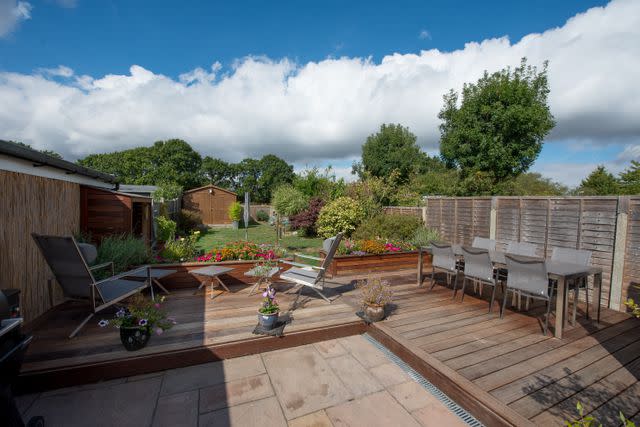
John Keeble / Getty Images
For a larger area, you can section out the floating deck. Perhaps one corner is for dining, while the other is for sitting and enjoying the view. A setup like this is especially appealing to guests.
Match the Deck to the House

nuchao / Getty Images
Sure, you can stick to warm, woodsy tones for your floating deck. Or you can paint it to match the siding of your house. A light greige plays nicely with a modern exterior.
Create a Path
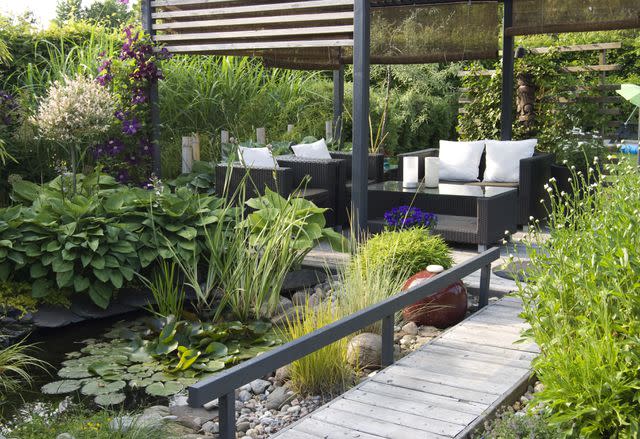
Eirasophie / Getty Images
A floating deck area can be a true destination if you make a path leading to it. If you have a large yard, maybe one that is big enough for a koi pond alongside the deck as seen here, this path can take the form of a bridge over the water.
Make It Narrow
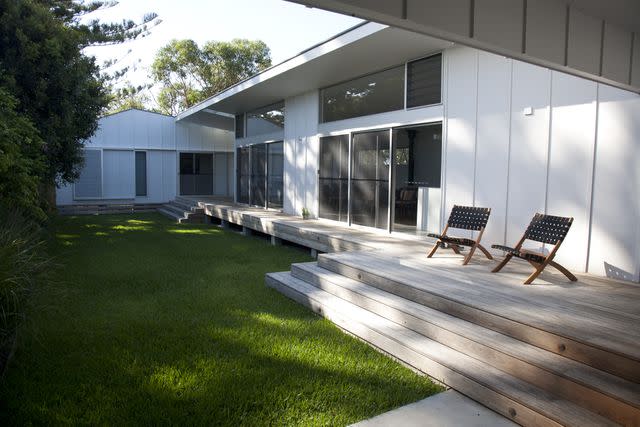
Doug Byrnes / Getty Images
For a shoebox-shaped yard, think about adding a skinny floating deck just beside the house. It can serve as the perfect perch for a pair of chairs and perhaps some small planters.
Add Columns
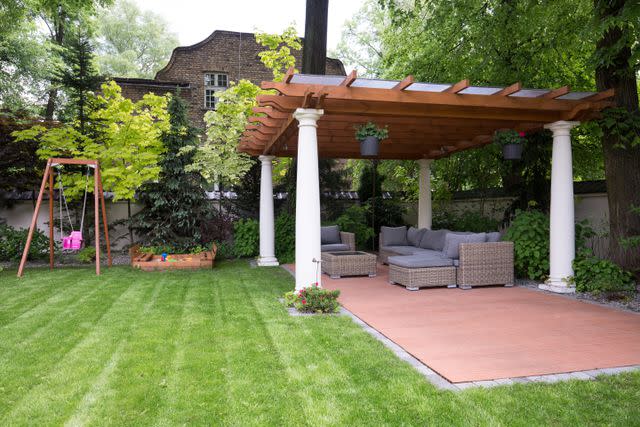
KatarzynaBialasiewicz / Getty Images
To make the humble floating deck more stately, add columns supporting a trellis structure above it. If the floating deck is near a fence, this will create a palatial aesthetic that pairs well with a prim and proper lawn.
Surround It With Greenery
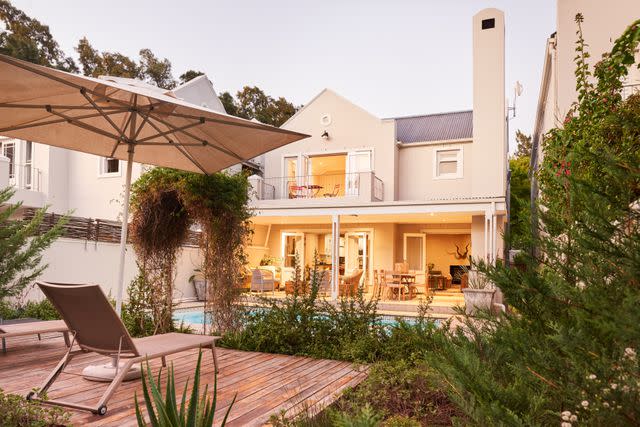
AJ_Watt / Getty Images
Make a floating deck in the middle of the yard look more integrated by surrounding it with landscaping and a trellis.
Float It Just Outside
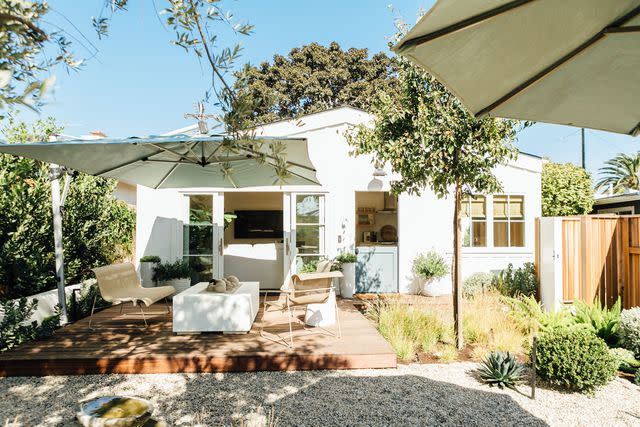
While, by definition, a floating deck is one that sits away from the house, you can build the low-lying structure adjacent to your home to act as a true outdoor living room. Make sure the outdoor furniture is similar in style to what you have indoors for a cohesive transition.
Modernize a Historic Home
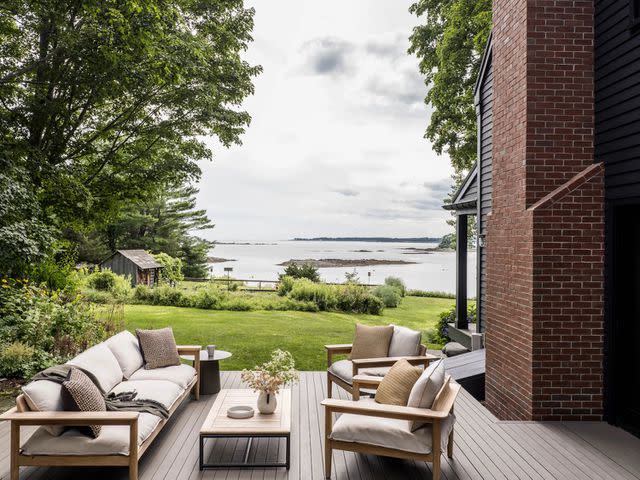
Tyler Karu Design and Interiors / Photo by Erin Little
A floating deck is an ideal solution for adding a modern outdoor space to a historic home renovation. Tyler Karu Design and Interiors built around this original 1700s waterfront home in Maine to create a clean-lined, modern floating deck decorated with comfortable lounge seating.
Frequently Asked Questions
Is a floating deck a good idea?
“Floating decks can be a great option for areas with uneven or sloped terrain, as they can be built without the need for extensive excavation or permanent footings,” says John Ward, co-owner of Austin Iron Fences. “They are generally easier and quicker to construct compared to traditional decks. However, it's important to consider local building codes, the size and weight capacity of the deck, and any potential issues with drainage or shifting of the deck over time.”
Annie Thornton, outdoor expert at Houzz, says that a floating deck is a good idea as it encourages guests to step away from the main gathering spot and explore the garden. “This can give the sense of a journey to a destination and can make two parts of a yard feel like distinct areas," she adds.
How much does a floating deck cost?
According to Charlotte Granville, home remodeling specialist at Fixr, in terms of costs, floating decks don’t generally differ much from other types of decks. Floating decks will range between $20 and $40 per square foot, depending on the materials used and whether the ground or the foundation needs to be leveled. Depending on the setup of your back yard, you may also want to build a walkway, which can run an additional $500 to $900, with gravel being the most affordable material option.
Oliver Truswell of BuildTuff in Brisbane, Australia says that part of the reason that a floating deck is more budget friendly than bigger, traditional decks, floating decks are typically limited to three feet in height unless used in combination with in-ground concrete piers.
Should I put gravel under my floating deck?
It's not necessary to put gravel under a floating deck, but it can be helpful, notes Jason Farr, the CEO of Aviara Paver.
“Gravel can provide extra stability for the deck and help it to stay level. It also serves to keep the deck away from moisture and water, which can cause rot or mold,” Farr says.
Another benefit? "Gravel under the deck blocks helps with drainage," Truswell says. "You can use any form of aggregate: paver base, crushed rock or crusher dust."
What is the best base for a floating deck?
You can use gravel or concrete blocks as the base for a floating deck. Consider laying landscape fabric over cleared lawn to prevent weeds from growing.
Read Next: 30 Ideas That Prove Small Decks Can Be Beautiful and Functional
Read the original article on The Spruce.

